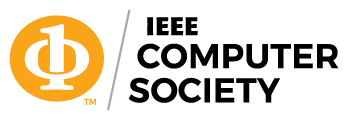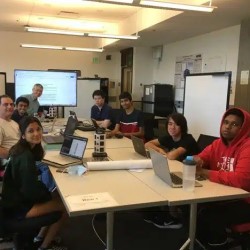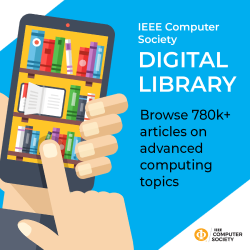Guest Editor Guidelines for IEEE Computer Society Publications
Here, we provide the information you need to oversee peer review as a guest editor for an IEEE Computer Society publication.
The Guest Editor Role
Many IEEE Computer Society (IEEE CS) publications invite guest editors (GEs) to propose special issue (SI) topics. SIs play an important role in highlighting emerging areas of research and providing a variety of perspectives on a particular topic to the publication’s readership. Note that individual publications may use similar terms such as special section, theme issue, or mini-theme.
GEs contribute to the creation and management of their SI. Normally, this includes preparing and promoting a call for papers (CFP), recruiting high-quality submissions, identifying qualified reviewers, and writing the introduction to the special issue. For some publications, GEs are involved in supporting the rigorous peer review process for submitted manuscripts in keeping with the publication’s policies. In these cases, one or more GEs will participate in inviting reviewers and evaluating the reviewers’ comments; in other cases, Editorial Board members may be assigned to handle the review process. Since the roles assigned to GEs can vary by publication, this should be discussed with the EIC at the time the special issue is approved to ensure a clear understanding of the expected tasks and deadlines. It is very important to ensure the timeliness of the overall process so that all final materials are available by the publication’s deadline.
All GEs are required to review and consent to the IEEE Computer Society GE guidelines described here, on the publication’s website, and in any other communications coming from the EIC or staff.
IEEE entrusts the responsibility for all content decisions to the EIC, who oversees peer review and content handling to ensure these activities comply with all IEEE and IEEE Computer Society policies. The EIC has the discretion to include one or more members of the Editorial Board and/or members of the GE team to support the peer review process for submitted articles. Please note: GEs who are not already members of the publication’s Editorial Board must be nominated, vetted, and approved by the CS Publications Board and/or cosponsored publication Steering Committee in order to oversee peer review. In either case, the handling editors make recommendations to the EIC about which articles to accept based upon the peer review process they have overseen. All final decisions are made by the EIC.
The IEEE Computer Society requires that papers be selected for publication on the basis of merit and appropriateness. All technical manuscripts are submitted through our online peer review system, ScholarOne Manuscripts. This ensures that each submission is tracked properly, receives a fair and unbiased review, and is handled in an efficient and timely manner. GEs who will be assigned articles in ScholarOne but are unfamiliar with the system should view the ScholarOne Editor Basics video tutorial. If there are any problems using the system, please contact the publication’s peer review administrator.
Conflicts of Interest
It is a conflict of interest (COI) for any GE to submit an article they have authored to the SI that they are overseeing. If a GE would like their research to be considered for publication in the SI, advance permission must be granted by the EIC and the article must be assigned by the EIC to a non-conflicted member of the Editorial Board to ensure an independent and unbiased review. GEs shall play no part in the review or decision-making for that paper. If accepted, the article may appear as part of the SI, but the GEs’ introduction (see the Guest Editors’ Introduction section) should explain this special handling to the readership to clarify how the apparent COI was addressed.
No GE should act as a reviewer of articles submitted to their SI. IEEE Publication Services and Products Board Operations Manual (PDF) Section 8.2.2.A.1 states, “Careful selection of referees shall be made to avoid any conflict of interest or bias with regard to authors of the article being reviewed (see also Subsection 2.6.2). Editors responsible for the final decision on an article shall not serve as a referee for one of the independent reviews used in the decision for an article.” Authors of papers submitted to the SI shall not serve as reviewers of other articles submitted to the SI.
If a GE supporting the peer review process has a potential COI with an article they are assigned, they must report the COI to the EIC as soon as the COI is discovered. The paper will be reassigned to a non-conflicted individual who will oversee the peer review process and make all recommendations for the paper. COI is defined in IEEE Policies, Section 9.9 – Conflict of Interest (PDF). COIs include the following:
- Your PhD advisor, post-doctoral advisor, PhD students, and post-doctoral advisees, forever.
- Family relations by blood or marriage, or their equivalent, forever.
- People with whom you have collaborated in the past five years, including co-authors of accepted/rejected/pending papers and grant proposals.
- Funders (decision-makers) of your research grants, and researchers whom you fund.
- People (including students) who share or shared your primary institution(s) now or in the past five years.
- Other relationships, such as close personal friendship, that might affect your judgment or could be seen as doing so by a reasonable person familiar with the relationship.
Proposing a Special Issue and Creating a Call for Papers
Please review the publication’s website for any specific proposal template or requirements.
The SI proposal is expected to provide the title, the team of GEs including their qualifications, an explanation of the SI’s scope and the rationale for it, and an outline of the dissemination/advertising plan. Requests for a preferred publication date may also be included, but final issue assignment and the review schedule must be approved by the EIC, subject to availability.
Submit your proposal to the publication’s EIC, unless the publication website designates an alternate point of contact, such as an associate editor-in-chief (AEIC). Unless submissions to the SI are strictly “invited” (for which specific authors are asked to submit), please include a CFP created using the CFP template (download).
If the EIC approves the proposal, the following steps will be triggered:
If the EIC approves the proposal, the following steps will be triggered:
-
-
- The CFP will be posted to the publication website and the Computer Society CFP portal, and the URL will be provided to the GEs for dissemination.
- The IEEE CS will advertise the CFP via newsletters, social media channels, etc.
- The SI will be opened in ScholarOne and ready for author submissions.
-
In the CFP, authors should be instructed to submit full-length papers via ScholarOne Manuscripts, selecting the SI to which they are submitting in the “Manuscript Type” drop-down menu on the first screen of the submission process. If the GEs wish to review abstracts in advance of full submissions, please indicate this in the CFP with directions for how authors should submit the abstracts directly to the GEs.
Recruiting Content
GEs should broadly promote their CFP (if applicable) through distribution opportunities such as social media channels, community newsletters, and professional networks. Encourage people in your field to submit their work to the SI.
Solicit original work from authors that has not been published elsewhere. Please read about concurrent/dual submissions here.
Revised and expanded versions of papers that have previously appeared in a conference proceedings may be submitted but must undergo a detailed technical review process to determine whether there has been sufficient new material added to warrant publication. Please read about preliminary/conference versions here.
If a submission is sent directly to the GEs, the authors should be directed to ScholarOne. If the authors have questions about how to submit, please direct them to the Author Guidelines page.
Once an author submits their article, it will be checked for length, plagiarism, and other requirements before proceeding onto the review process. The handling editor who is assigned by the EIC to handle the review process will then see these articles appear in their dashboard in ScholarOne.
Reviewer Solicitation
Finding qualified reviewers is a major challenge. This process takes time and can make it difficult to meet the publication’s deadlines and stay on schedule. It may be advantageous to solicit reviewer commitments from a large, diverse, and broad pool of qualified individuals who reflect the international community. Securing commitments from prospective reviewers before submissions arrive can be key to ensuring the SI stays on schedule. Remind reviewers of the focus of the issue and the importance of their feedback and timely submission of comments.
GE teams who would like to suggest a list of qualified individuals who are willing to review may send a complete contact list to the peer review administrator, who may be able to identify the corresponding ScholarOne accounts or indicate those individuals who do not yet have an account. Please indicate whether you have already confirmed their willingness to review in the allotted time (about three weeks).
Note that GEs may not serve as reviewers for submissions to their SI. Similarly, authors who submit to the SI may not act as reviewers.
Whenever possible, articles must be reviewed by three independent and non-conflicted reviewers. If there is difficulty obtaining a third reviewer, the handling editor may discuss options with the EIC. Depending on the quality and feedback of the reviews received, the EIC may approve moving forward with two reviews, but two is the minimum number required by IEEE. IEEE Publication Services and Products Board Operations Manual (PDF) Section 8.2.2.A.1 states, “At no time should an article be accepted or published in an archival journal without prior review of the complete article by two or more referees who are conversant with the pertinent subject area, at least two of which are independent of persons involved in the decision process for acceptance.”
Please read the following sections:
Making a Recommendation
Once the required reviews are complete, the handling editor will be prompted to make a recommendation in ScholarOne. Please read our guide for making recommendations here. When making recommendations, handling editors should take into account the SI’s scope and available pages.
Peer Review Schedules
Typically, GEs submit their SI proposal at least 12 months prior to the cover date. For an overview of the SI timeline for submission, review, revision, and production, please see our peer review schedule guide here. For IEEE Open Journal of the Computer Society GEs, click here.
Guest Editors’ Introduction
The guest editors’ introduction (GEI) should discuss the SI topic and present recent results, future directions, and important trends and their implications. The GEI should show the reader why this topic is important and timely. It could include an overview to introduce concepts and terminology, enabling readers unfamiliar with the topic to better understand the articles.
GEIs should give a short introduction to each paper in the SI. Papers should be referenced in the order they are to appear in the publication. The GEI should not summarize the articles, but instead explain how they relate to the topic and to each other to motivate the reader to read them.
To protect the identity of the reviewers, no reviewers lists will be published as part of the SI. However, GEs are encouraged to acknowledge the general contributions of the reviewers in the GEI, and a complete list of all publication reviewers will be published annually.
Magazine GEIs should be 1,000 to 2,500 words, and journal GEIs should be no more than two pages, including GE biographies and photographs. Author templates are available in the IEEE Template Selector. Biographies should be moderate in length, otherwise they will be edited. GEIs must include each GE’s complete and current affiliation and contact information. GEIs should not include references unless absolutely necessary, and even then they should be limited to a maximum of four.
Send your GEI to the EIC directly unless instructed otherwise. GEIs must be submitted in an editable format, such as a Word document. GEs are responsible for reviewing the galley proof of their editorial and communicating any corrections to the IEEE production staff.






